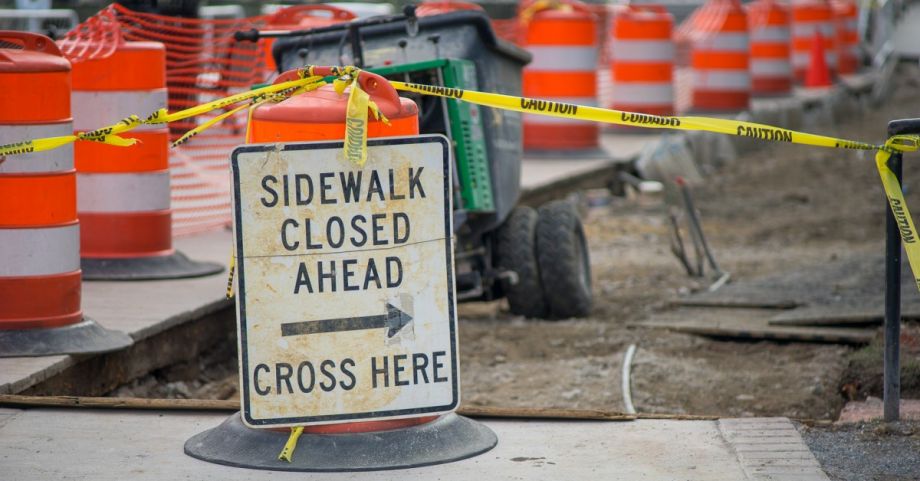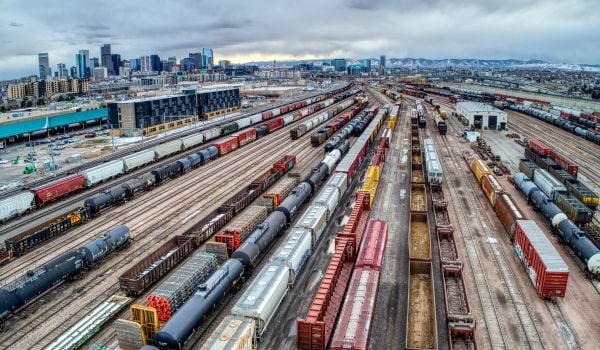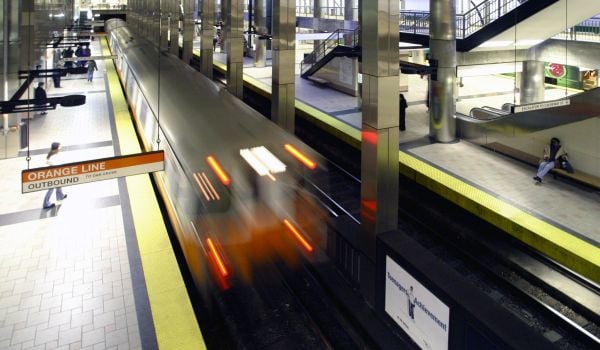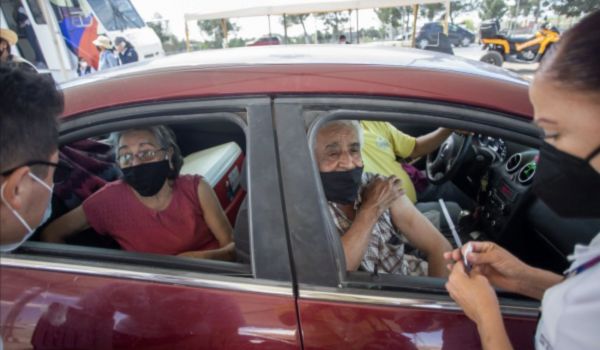Welcome to “The Mobile City,” our weekly roundup of newsworthy developments in urban transportation.
This week, the big story in urban transportation has to do with its basic building block: the city sidewalk. The COVID-19 pandemic has brought with it renewed appreciation of the role sidewalks play in a functioning urban transportation system — and the realization that right now, many of them can’t even handle what they were supposed to do before so many people took to them or required social distance.
In some parts of the country, however, even building a new sidewalk would trigger an environmental review process that adds time and cost to the project. Some California legislators, noting that pedestrian and bike transportation improvements bring environmental benefits with them that almost always exceed their costs, have proposed that such projects bypass environmental review so they can get underway faster, saving even more money.
And finally, the need for social distance has made a common feature on public transit suddenly scarce, namely, seats on buses and trains. As more riders return to transit, they may find that seats they once could get easily are now filled when their conveyance arrives. The Long Island Rail Road now has an app for that — it tells riders how many seats are available on the next train to arrive at their station.
The Next Big Infrastructure Challenge: Fixing Broken Sidewalks
If, as the Chinese proverb goes, “the journey of a thousand miles begins with a single step,” might it not be worthwhile for our cities to make sure we can take that first step without tripping and falling?
The COVID-19 pandemic has brought to the surface an infrastructure crisis that’s been festering right under our feet for decades: Sidewalks that can’t carry even the traffic they were built to handle safely, let alone the greater numbers using them since the outbreak.
A June 16 Bloomberg CityLab feature examines “The High Cost of Bad Sidewalks.” What a suddenly much larger number of city-dwellers have discovered (anew) as COVID-19 has turned them into walkers is: Not only do we not have enough sidewalk space to carry all the walkers safely, the sidewalks we do have are in bad shape.
It turns out that our sidewalk infrastructure crisis has been a century in the making. Before the automobile, a greater portion of city street space was devoted to moving foot traffic, but as auto use climbed, cities, with help from the Feds, reshaped their streets in order to move more cars along them, including making sidewalks narrower. Newer cities that have largely developed in the Auto Age have even done away with them for the most part: The article notes that in Austin, barely half the city’s 5,000 miles of streets had sidewalks on them as of 2017.
Compounding the problem in popular city neighborhoods is the spread of sidewalk dining. This key contributor to urban vitality nonetheless eats valuable sidewalk space, rendering narrow sidewalks in cities like Philadelphia barely passable.
Then there’s the question of paying for construction and repairs. In many cities, including Minneapolis, Philadelphia and San Jose, sidewalk maintenance is the responsibility of the adjacent property owner, even though the sidewalk is public space. This requirement makes comprehensive sidewalk maintenance and improvement a hit-or-miss affair in those cities, but one such city, Denver, developed a workaround in the form of a $4 million sidewalk-improvement grant program to property owners in low-income neighborhoods.
But even those cities like Boston and Washington that maintain sidewalks directly find cobbling together the money needed to fix and build new sidewalks something of a challenge — ironically, because the costs are so low. Repairing or building a mile of sidewalk runs in the tens of thousands of dollars, a rounding error in the project budgets of the highway projects state transportation departments favor. And because sidewalk projects also consume less labor, there’s not much of a constituency for them within state or even city transportation departments.
Investing in sidewalks, however, pays off big time not only in ensuring first- and last-block access to other modes of transportation but in neighborhood livability and especially community health: the article cites a 2009 study in the Journal of Preventative Medicine that found that urban residents across 11 countries were more likely to get at least 30 minutes of daily physical activity if they lived in a neighborhood with sidewalks on most streets. The study’s authors called sidewalk improvements a “practical and effective policy for encouraging physical activity.”
This, the article argues, should make investing in sidewalks a federal case. That’s because the federal government is not constrained by the balanced-budget requirements written into most state constitutions and could most easily allocate the money needed for a crash program of sidewalk expansion and repair.
California Moves to Streamline Urban Mobility Project Approval
California, as most readers of this column should know, has some of the strictest environmental quality standards in the country, a product of the stifling air pollution caused by all those cars darting to and fro in the Los Angeles Basin, the 1969 Santa Barbara oil spill and a few other environmental calamities.
In the state’s cities, however, the environmental review process the California Environmental Quality Act (CEQA) requires projects to undergo has the side effect of making it harder to build infrastructure improvements that would be environmentally beneficial — projects like bike and bus lanes, improved transit stops, and (yes) better sidewalks.
To fix this, Streetsblog San Francisco reports, California State Senator Scott Weiner (D-San Francisco) has introduced a bill that would exempt many urban transportation improvement projects from the CEQA’s review requirements. The projects covered by the bill include safer-streets projects for walking and biking, new and improved transit stations, bus rapid transit infrastructure, bridge repairs and electric-vehicle charging stations.
Laura Tokloff, regional planning policy director for the San Francisco Bay Area Planning and Urban Research Association (SPUR), explained in an email to Streetsblog that the bill would bring California in line with best practices worldwide. “In other countries, transit and sustainable transportation projects are commonly presumed to have a positive impact on the environment by reducing driving and greenhouse gas emissions,” she wrote. “In Canada, most public transit projects do not have to complete a full environmental assessment. In Germany, agencies can self-certify that they are compliant with environmental laws.”
Removing these projects from the review pipeline also removes the threat that a few organized NIMBYs might derail locally or regionally beneficial transportation improvements. Weiner also noted that these projects would put people back to work quickly.
Besides, said San Francisco Municipal Transportation Agency Director of Transportation Jeffrey Tumlin in a news release, these projects have almost no environmental costs to begin with: “Striping bike lanes or transit-only diamonds onto San Francisco’s existing asphalt does not pose a threat to California’s environment. In order to address climate change, social equity, and the COVID health and financial crises, we need more projects that put people first. And we need them fast.”
New App Answers A Key Commuter Question: “Will I Get a Seat?”
Transit agencies everywhere have to balance two considerations when ordering and outfitting vehicles: Carrying as many people as possible and carrying them as comfortably as possible. And the answers vary depending on the mode of transport. Subways, for example, often minimize the number of seats in a car in order to better handle peak-hour loads, while regional rail cars maximize seating so riders on their longer commutes won’t have to stand.
The COVID pandemic has changed how well both of these approaches work. Social distancing considerations reduce both the number of people who can stand in the middle of a subway car and the number of seated riders a train can carry. For subway riders at peak hours, the changes may simply mean riders wait a few minutes until the next train appears, but regional rail riders may have to wait longer for a train that’s as full as the one they couldn’t board.
To help riders better figure out how to get to work , Railway Age reports, Long Island Rail Road riders can now use the LIRR’s Train Time app to learn how many seats are available on the next train to arrive at their station. The capacity tracker feature, which made its debut June 16, shows the number of seats available in each car of an LIRR train in real-time.
The capacity tracker works with the LIRR’s M9 and M7 railcars, which make up 90 percent of the LIRR’s electrified fleet. (Diesel-hauled trains are not included at all.) Another improvement to the app gives it the same functionality as ride-hailing apps like Uber and Lyft and many local transit apps already offer: the ability to view train locations on a map in real-time.
The seat-availability function works on the older M7 cars by measuring how much weight each railcar’s suspension system is bearing. The car’s software then transmits this information to a central server that then runs calculations to translate the weight data to seats-occupied data. On the newer M9 cars, seat availability is computed by using passenger counts from door-mounted infrared sensors.
The app will also deliver push notifications to riders of platform locations at Penn Station in Manhattan, Atlantic Avenue Terminal in Brooklyn and Jamaica Station in Queens.
“By providing customers with real-time capacity information and service updates, we’re providing the tools necessary for navigating some of the uncertainties of mass transit in this difficult moment,” LIRR Chief Innovation Officer Will Fisher told Railway Age. “We look forward to rolling out additional features in the weeks and months to come and are eager to hear from our customers about how we can improve the app further.”
Know of a development or project that should be featured in this column? Send a Tweet with links to @MarketStEl using the hashtag #mobilecity.

Next City contributor Sandy Smith is the home and real estate editor at Philadelphia magazine. Over the years, his work has appeared in Hidden City Philadelphia, the Philadelphia Inquirer and other local and regional publications. His interest in cities stretches back to his youth in Kansas City, and his career in journalism and media relations extends back that far as well.
Follow Sandy .(JavaScript must be enabled to view this email address)
















